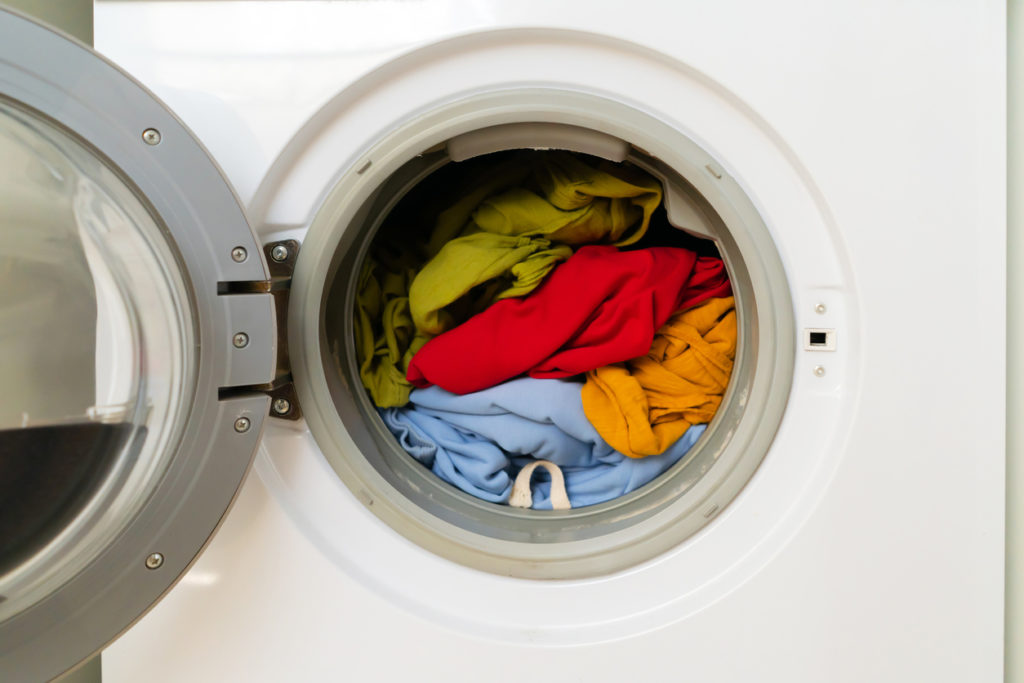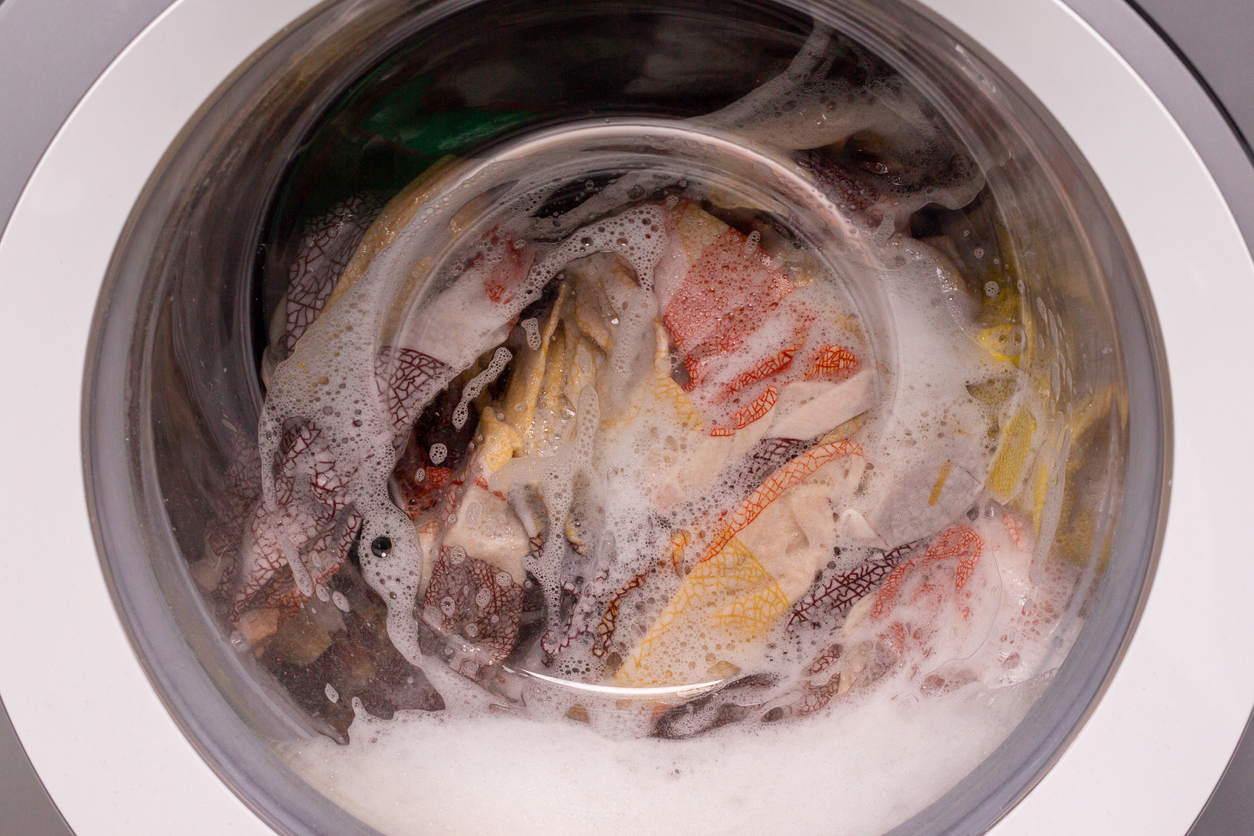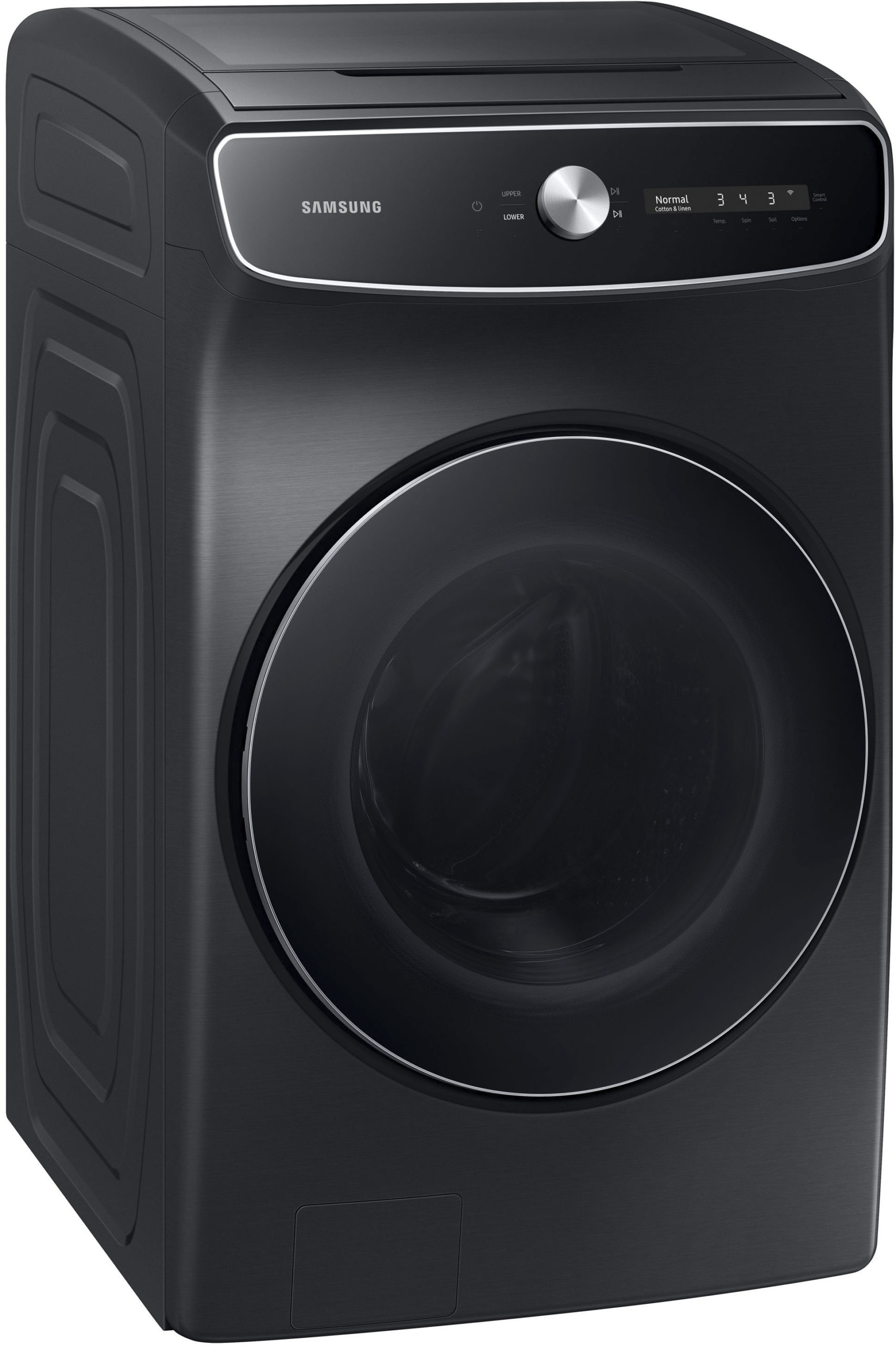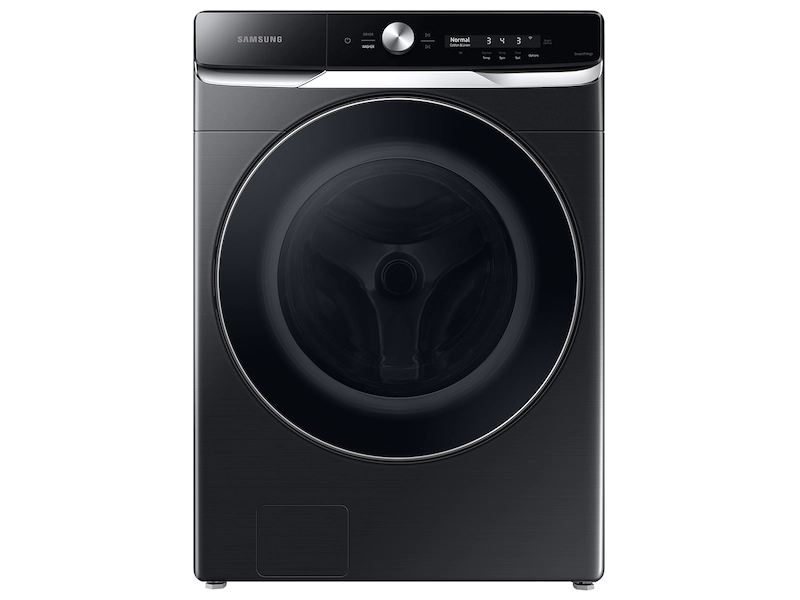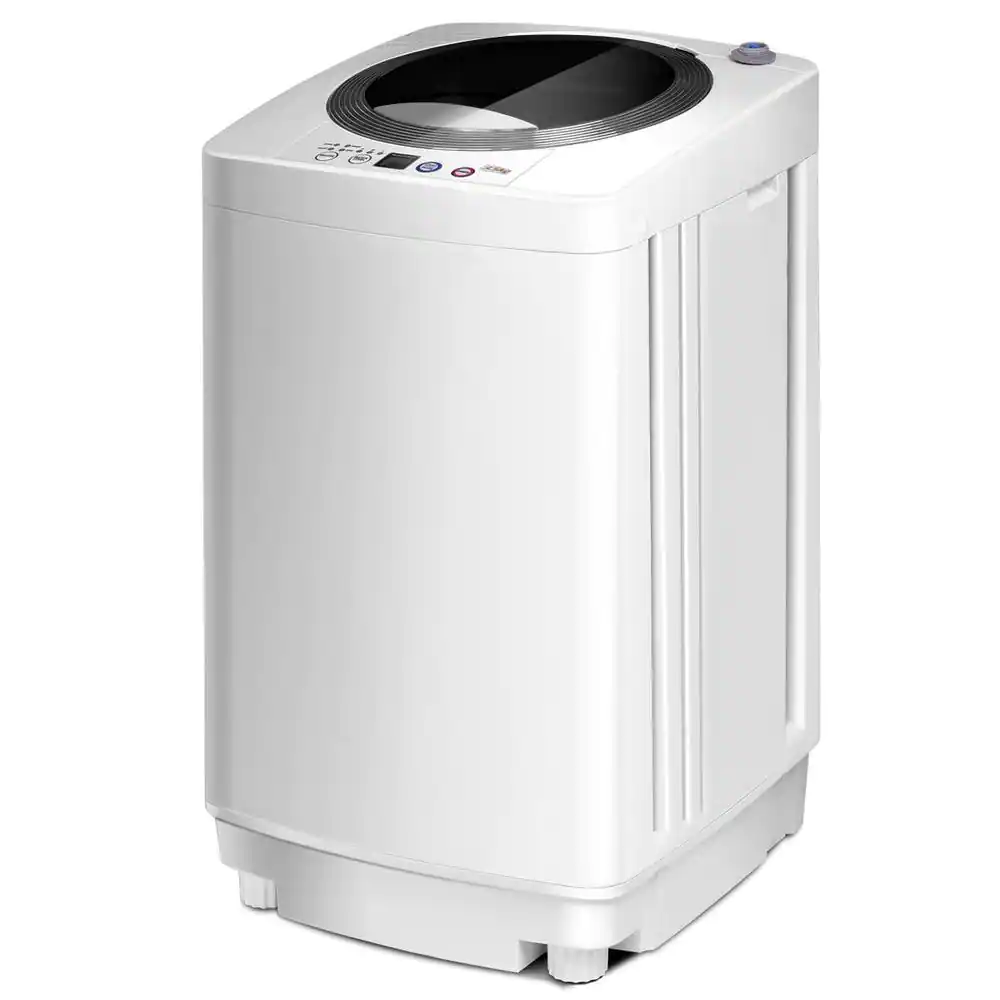Many factors can affect the amount of time it takes to wash clothes. A washing machine’s type, cycle presets, options, and load size will determine whether your laundry takes minutes or hours to get clean. The time it takes to do laundry also depends on how dirty your clothes are. A typical cycle for a front-loading machine could take up to 120 minutes to complete. High-efficiency top-loaders are faster at 60-85 minutes, and agitator top-loaders are the speediest washers at 35-80 minutes per load. Cycle times will vary with each model, but looking at some options can give you an idea of the time it will take to do your laundry.
Choose Your Load Size
The wash cycle time can vary depending on the load size you choose. Smaller loads take less time to wash. The size of a load depends on the capacity of your washing machine. The owner’s manual should specify the drum capacity and recommend the best load size and weight for that model. Low-capacity top-loading machines may be full at 6 pounds; high-capacity home machines might max out at 15 pounds. A front-loading machine may take an 18-pound load, depending on its design. However, the maximum load size is not necessarily the ideal load size, especially for very dirty laundry. Clothing needs room to move freely so that water and detergent can flow with enough speed and pressure to wash and rinse fibers completely. Overly large loads may reach the end of their cycles with dry spots and unevenly distributed soap. Packed-in clothes can be damaged by excessive wear from pulling and twisting.
Ensure that the clothes are evenly distributed throughout the drum. In general, a drum that’s one-quarter full carries a small load. A half-full washing machine carries a medium load, and a washer that’s over one-half full contains a large load of laundry.
- Patent: US 9,926,105 B2 ; DE 20 2014 101 047 U1 ; ZL 2014 1 0386688.1
- BPA Free. Comfort grip handles for easy carry. User friendly by simply pop-up to open when using and collapses to flat for space saving
- Space saving with Expanded size: 22.8 x 17.5 x 10.6 inches and its height just 2.7 inches after folds, save over 70% space when storage
- Perfect design, which all the wall and angles stand relatively straight and without deform
- Perfect for laundry and storage container for toys, clothes and keep in the trunk of your car
Washing Machine Cycles and Options
Washing machine cycles and options can vary from machine to machine. Cycles might be labeled by fabric type or cleaning application. Pay attention to each cycle’s length, intensity, temperature, spin, and rinse. Using the wrong cycle can lead to worn-out or less-than-clean clothing.
Here are some common cycles listed with their time ranges for completion. Keep in mind that cycle types can change to reflect market trends, and time ranges can vary by manufacturer.
50-60 Minutes Is Typical for a Normal Cycle
A normal wash cycle uses high agitation and a medium-to-long wash cycle to clean durable, everyday items like towels, jeans, sheets, T-shirts, socks, and underwear. The cycle time could increase or decrease depending on the load size and options you select. Tightly packed loads and too much soap can extend wash times.
50 Minutes to 75 Minutes on Permanent Press
The permanent press cycle accommodates synthetic and “wash and wear” garments that are blended or treated to be wrinkle-free. A short-to-medium-duration warm water cycle and a low-speed spin cycle provide a gentle yet effective wash.
Delicate Cycle Takes 45 Minutes to 80 Minutes
The delicate cycle, also called the gentle cycle, was created to simulate hand washing. This cycle is typically short and uses cold or warm water, low agitation, and low or no spin to clean silk, wool, and synthetics. Sheer fabrics, lingerie, sweaters, and dark jeans are commonly washed using the delicate cycle setting.
A Rinse and Spin Cycle Takes 20-25 Minutes
The rinse and spin cycle rinses clothes with water, then spins out the moisture. It can help get every last bit of excess detergent out of your clothes.
A Quick Wash Takes 15-40 Minutes
A quick or speed wash is ideal for small, lightly soiled loads of laundry or a forgotten, damp load that was left in the washer overnight. The cycle ends with a high-speed spin that removes most of the moisture from your clothes so that they will dry quickly.
60 Minutes to 135 Minutes on Heavy Duty
A heavy-duty wash cycle uses a long duration, high agitation, and fast spin cycle to clean sturdy, heavily soiled fabrics. This cycle removes as much moisture as possible from your clothes. It can be hard on clothes and should be used sparingly.
Bulky Cycle Lasts Between 50 Minutes and 110 Minutes
The bulky cycle maximizes cleaning power by using extra water to fully soak and rinse clothes. It’s meant for occasional use, and it’s suitable for washing blankets, duvets, and sleeping bags or muddy and heavily stained, durable clothing.
90 to 110 Minutes to Sanitize
A sanitizing cycle uses superheated water combined with detergent and an oxygen additive or other sanitizer to help eliminate bacteria. The long-duration cycle ensures that clothes get completely clean.
Consider Your Temperature Settings
Hotter temperatures can speed up wash times by making it easier for the detergent to separate dirt from clothing fibers. Hot water is not suitable for all fabrics, so take care when adjusting the temperature setting.
Select Your Soil Level Settings
A soil level setting may allow you to adjust the strength or duration of your wash. Generally speaking, the higher the soil level, the more/higher the agitation time and speed. Extremely dirty clothes take longer to wash. The duration will vary depending on the cycles or options you choose.
- One 166.5 fl oz bottle of ARM & HAMMER Plus OxiClean with Odor Blasters Laundry Detergent, Fresh Burst Liquid Laundry Detergent cleans 128 medium loads when used as directed
- Triple-power HE laundry detergent fights tough odors, blasts away stains and boosts freshness so your clothes look and smell their best
- With trusted ARM & HAMMER Baking Soda plus an odor fighter, this HE laundry detergent is formulated to deeply clean clothes and deliver lasting freshness
- Laundry stain remover forces out stubborn stains and nasty odors using OxiClean Stain Fighters to remove stains like food, grass, grease and more
- Odor Blasters fights tough smells like body odor, sweat and musty towels and leave clothes with a lasting Fresh Burst scent
Choosing a Machine: Front Load Washer vs Top Load Washer

Front-load washers clean clothes better than top-load washers while being easier on clothes, but they are slower because the cycle times are longer. If a speedy wash is your top priority, choose a top-load washer; otherwise, front-loaders are considered to be better performers in everything but price.
Front-Load vs. Top-Load Washers
Agitators vs. Impellers — What’s the Difference?
Research Your Options
As you can tell, many variables affect the amount of time it takes to do laundry. When you shop for a washing machine, consider convenience as a factor in your decision-making process. Account for your lifestyle, the types of fabrics you wear, and the number of loads of laundry you need to do in a week. Careful research is the key to finding a machine that will perfectly suit your needs.
